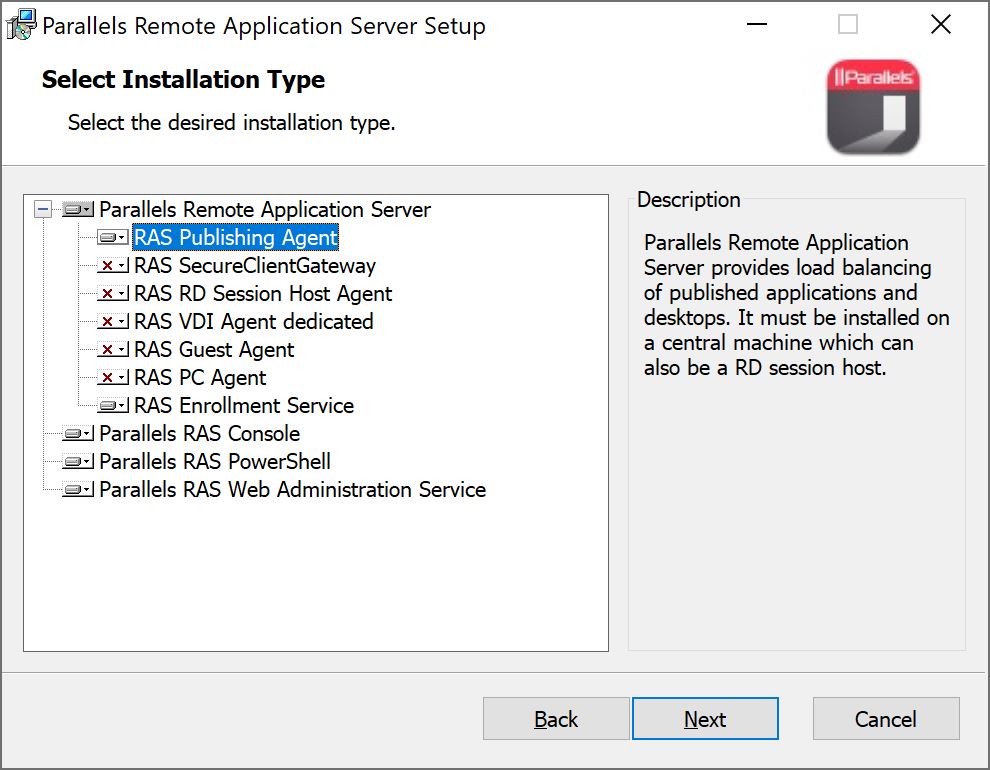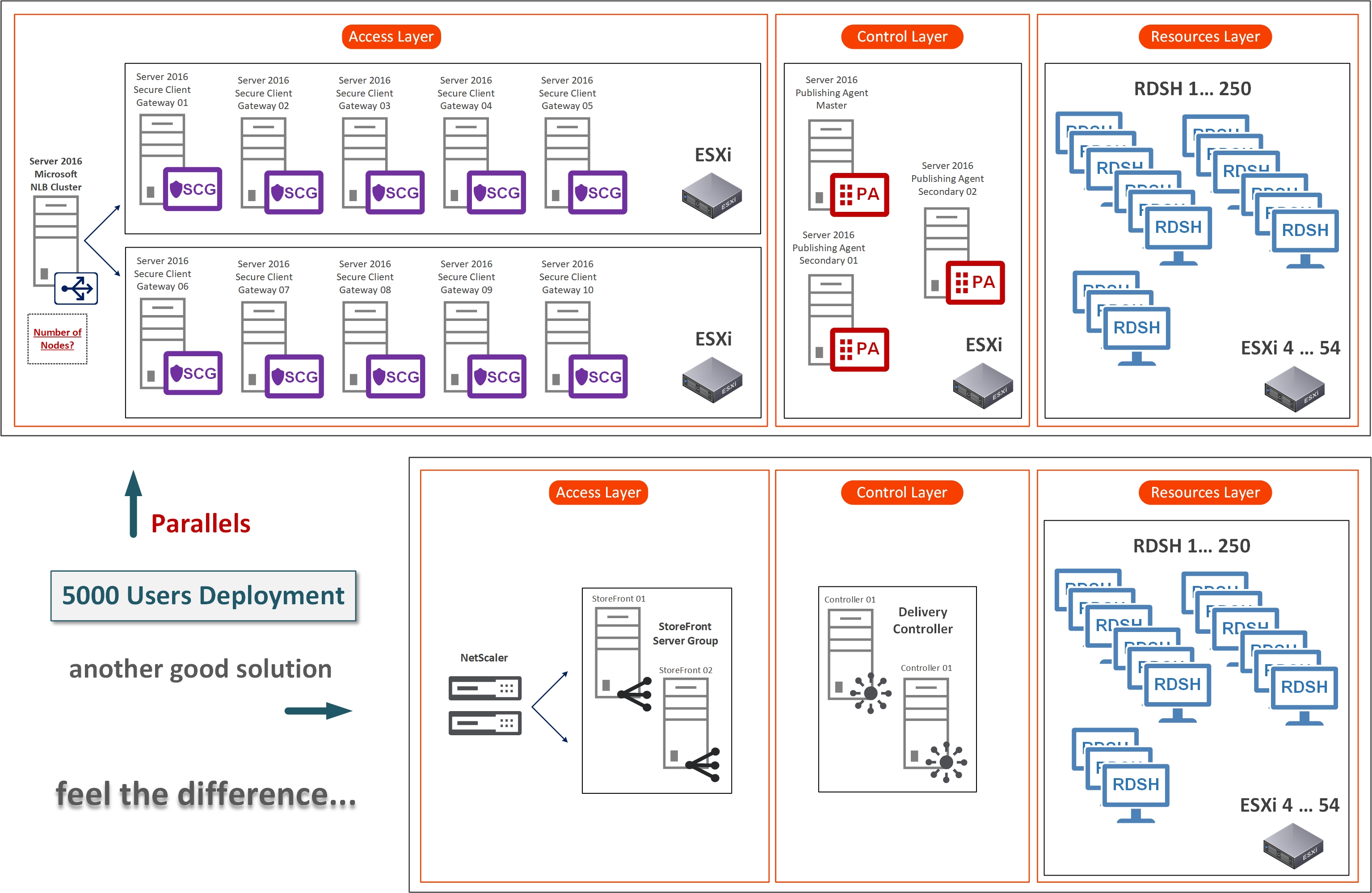Parallels is preparing for us here.
And Citrix, a careless ignorant
will disappear for a moment suddenly.
This article is a logical continuation of " Comparison of VDI and VPN " and is dedicated to my deeper acquaintance with Parallels companies, primarily with their Parallels RAS product. I recommend reading the previous article to fully understand my position. It is possible that some of us read my article may seem somewhat aggressive towards Parallels. But if aggressive marketing does not surprise us, then its constructive criticism should not surprise either. In this introductory article, we will focus on market positioning of the Parallels RAS product.
Parallels, a little history
I believe that Parallels should be viewed from the perspective of its historical development. My acquaintance with the company happened more than 10 years ago, due to the necessity at that time to use Windows 7 on MacOS through Parallels Desktop. I note that this acquisition really made my life easier. How much such a need still exists in 2020, and how many users buy Macs to use Windows on it, I don't know. In this market segment, Parallels Desktop competes with VMware Fusion and a free Oracle product, VirtualBox. In the context of our story, only the fact of Parallels' acquisition of the Maltese company 2X Software in 2015 is interesting. In 2018, Corelabsorbed Parallels, which in no way affected its activities. In 2019, the parent company Corel ceased to exist as an independent company, as it was acquired by the KKR investment fund .
If we look only at the Parallels portfolio, we will notice that all products except RAS (Remote Application Server) are aimed exclusively at users of computers running macOS, both private and corporate, and in this it is the clear leader. All further narration will be devoted exclusively to the Parallels RAS product.
With the creator of Parallels RAS, at that time 2X Software* I encountered over six years ago. At that time I was interested in MDM (Mobile Device Management) vendors. The first line of the About 2X Software * page began with the phrase “2X Software is a global leader in virtual application and mobile device management solutions.” I was somewhat dumbfounded by the courage of such a statement, assuming that there were two real leaders, AirWatch and MobileIron, I even had to read the Gartner Magic Quadrant - Unified Endpoint Management of that time. But 2X Software was not on the leaderboard, it was not at all in comparison with Gartner. I sincerely understand that if someone calls himself Napoleon, then he does not need to be convinced of the opposite, you need to show mercy to him. Maybe I'm wrong, but even in self-promotion you can’t get so far off from reality. (* the company offered its customers two products: X2 RAS 2X MDM).
How popular is the product, how is it positioned, and what is its real market share?
Perhaps the discussion of market share is the most difficult question for any IT manufacturer, since there are no real methods of independent assessment. This also applies to popularity. As an independent source, I propose to consider five reports created by the following organizations:
1. IDC (International Data Corporation) . In this case, we will review and compare two reports:
- IDC MarketScape: Worldwide Virtual Client Computing Software 2016 Vendor Assessment
- IDC MarketScape: Worldwide Virtual Client Computing 2019 - 2020 Vendor Assessment

The graphs clearly show that the position of Parallels over the past four years has undergone, from my point of view, significant changes, and, it seems to me, not in a positive direction.
In 2016, being in the Major Players group, Parallels came close to the leader group, but four years later Parallels lagged behind them, approaching the Contenders group. Is it a success?
2. VDI like a PRO. In this case, we are talking about a report created by three recognized experts in the EUC field. The report is based on a survey of a fairly significant number of participants (2018 - 750, 2019 - 582, 2020 - 695):
- State of the VDI and SBC union 2017 - Authors: Ruben Spruijt and Mark Plettenberg
- End User Computing State of the Union 2018 - Authors: Ruben Spruijt and Mark Plettenberg
- End User Computing State of the Union 2019 - Authors: Ruben Spruijt, Christiaan Brinkhoff and Mark Plettenberg
- End User Computing State of the Union 2020 - Authors: Ruben Spruijt, Christiaan Brinkhoff and Mark Plettenberg
During the survey, the following questions were asked:
- 2018 - 2019 "What VDI solution is used in your on-premises infrastructure?"
- 2018 - 2019 “What SBC solution is currently deployed in your local infrastructure?”
- 2020 What SBC and VDI solution is currently deployed in your on-premises infrastructure?

I believe that you as well as I am surprised how such a development became possible? How did Parallels manage to achieve such amazing popularity in 2019 and go down to zero in 2020? Let's start with the fact that in 2019 Parallels was one of the sponsors of the report along with Bitdefender. The fact of sponsorship is not a problem in itself, but we will not confuse sponsorship with charity. Sponsorship involves the preservation of investments and their return in a different form. A small story from life. The wife of a friend of mine opened a beauty salon, I was asked to positively mark it on one of their social networks, which I did, of course, in a friendly way ... After a while, the salon page had more than a significant number of positive responses.
As for the positioning of the product on the market, it is somewhat unusual. If you read the materials on the Parallels RAS page, you will probably be surprised by the constant one-sided comparisons of Parallels RAS with Citrix products. By the way, why Citrix, and not VMware? Maybe they see it in Citrix as a real market leader, which they are trying to equal?
If we turn to the above reports, it will be difficult not to notice another product occupying a leading position, namely VMware Horizon. Or does it turn out that Parallels RAS is better only than Citrix, but worse than VMware Horizon? Why is it not explained why a Microsoft RDS client (the basis for CVAD, Horizon and Parallels RAS) generally needs an addition to the existing, usually small and budget RDS infrastructure? The existing comparison with Microsoft does not look convincing.
In order to explain what Citrix is, in the past I used a comparison with car tuning. So, let's start with the fact that all of the above products perform the same main task, namely, the transmission of an image of the working screen (HSD / VDI) located in the data center to any user device. At the same time, the distance from the user to the data center should not adversely affect the quality of his work. Thus, it is the protocols for providing terminal access that are the key element. If we return to our comparison with car tuning, then Microsoft RDP is our good basic equipment (constantly improved with each new version), Citrix HDX or VMware Blast Extreme is our high-quality, serious tuning. If we talk about tuning, then it can be very different.Full tuning changes the key basic parameters of the engine, chassis, brake system, etc. Such brands as, Brabus, Alpina, Carlsson can be considered serious tuning. Or you can go to the workshop around the corner, and thus embellish the "basic package" for a relatively small amount.
Parallels RAS does not have its own data transfer protocol, but use the “basic package” of RDP. Parallels RAS is (based on my short and cursory acquaintance with the product), first of all, a more convenient and relatively easy-to-use RDS infrastructure management console, with the replacement of some components with our own. Although I can't help but admit that RDP is getting better and the communication channels are faster. Thus, the advantage of HDX / Blast Extreme over RDP is no longer a critical argument.
About some bold statements
In my opinion, this article is not entirely appropriate for a detailed discussion of product architecture. Well, according to the statements on the official page, Parallels RAS is so simple and intuitive that a couple of minutes is enough to deploy it. “Installing and configuring Parallels RAS is simple and straightforward. The default setup can create a fully functional environment in just a few minutes without requiring any training ".
The question arises, what kind of deployment are we talking about? Let's imagine that a potential customer downloaded the test version, and decided to approach the installation of the product more seriously than “Next, Next, Finish”, choosing the installation mode “Custom”.

Answer yourself to one simple question, which components should you install first? And remember you have a few minutes? Of course, I understand that all this is advertising, and other Parallels documents already talk about two or three weeks from PoC to Roll-Out. But should advertising be so different from reality?
The following diagram is an example of an architecture for 5,000 users, impressive, isn't it? As they say, there are never too many good components.

Conclusion
Parallels RAS is really quite an interesting solution, and it really develops, and additional new functions are regularly added to it, but ...
Dear colleagues, it may be worthwhile to evaluate your product more realistically, and not try to uncontrollably assert about the "undeniable" shortcomings of competitors' products, first of all Citrix, but describe realistic Use Cases?
I would also like to remind one more indisputable fact that for any major system integrator, it is important to offer the client a choice of several best solutions on the market, objectively presenting their advantages and disadvantages. Many clients limit their choice to the current Magic Qandrant leaders, initially weeding out all niche solutions.
I would be glad to know your experience of integrating the above-described product, if any.
I am always glad to have constructive comments.
To be continued ...
PS It is interesting to collaborate with colleagues from Parallels RAS in order to improve the quality of the material.